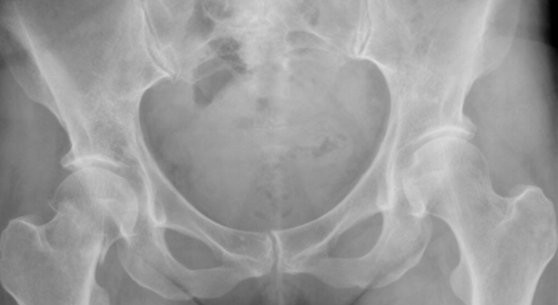Oxytocin in the Prevention of Osteoporosis in Females
- icshealthsciencejournal

- Aug 15, 2020
- 2 min read
Updated: Aug 23, 2020
Oxytocin in the Prevention of Osteoporosis in Females
Written By: Kandharika Bamrungketudom
August 15, 2020
Researchers from São Paulo State University (UNESP) in Brazil have found through an experiment with rats that osteoporosis due to aging can be controlled and prevented through the hormone oxytocin. This study was published in full in the journal Scientific Reports, and was supported by São Paulo Research Foundation (FAPESP).
Osteoporosis is a disease that causes bones to become weak and brittle, and thus more prone to fractures. It occurs when the rate at which bones are broken down is faster than which they are replaced. This is related to many factors, some of which are one’s biological sex, age, race, family history and body frame size. Older females after menopause, in particular, are more affected by this disease due to the lowered sex hormone levels at menopause, while the sex hormones level in men experiences a gradual decline through the aging process.
This study focuses on the stage of life called “perimenopause,” or the years before a woman faces menopause, since hormonal swings occur before menopause and affects bone density. The study also focuses on one area of the bone called the femoral neck, which is part of the hip, since this is the most common site of fracture (occurs three times more frequently in women than men).
The hormone administered in the experiment is called oxytocin, and is produced by the hypothalamus and secreted by the posterior pituitary gland. This hormone is often associated with childbirth and breastfeeding. More recent researches have also found that oxytocin is produced by other cells as well, including bone cells, and is involved in regulating bone mass.
In the study, two groups of female Wistar rats were used to test the effects of oxytocin on the prevention of osteoporosis, with one being the control group and the other being the experimental group which received oxytocin. The rats in the study were 18 months old, which is an age considered to be equivalent to humans experiencing menopause. Thirty five days after oxytocin was first given, blood samples and tissue samples from the femoral necks of the rats in both groups were examined.
The results show that the group receiving oxytocin experienced no loss of bone density, in contrast to the control group, which received no moderation in loss of bone density. Furthermore, the blood samples of the experimental group show bone formation markers such as alkaline phosphatase, and those rats have denser bones than the control group.
This finding may be of great help in the future, since it is predicted by the World Health Organization (WHO) that the cases of osteoporosis will increase by 50% in developed countries. However, more researches have to be put into this particular solution in order to assess its safety and efficacy.







Comments